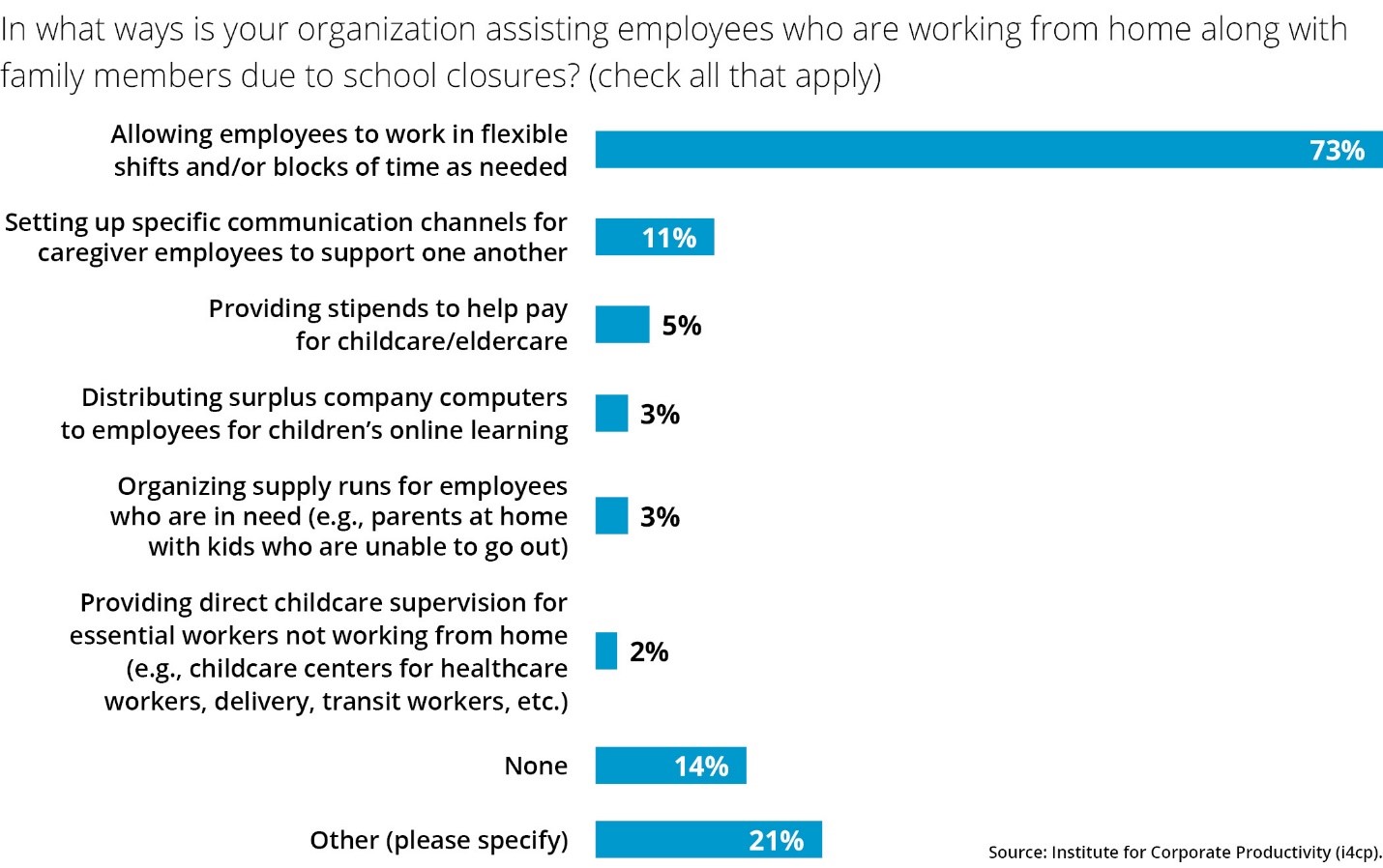i4cp: Most Companies Making Allowances for Workers’ Home Situations

73% of Companies Allowing Flexibility for Working Parents During COVID-19 Pandemic
Facing unprecedented school closures and increasing local and state government mandates to remain at home, most organizations (73%) are allowing employees to work in flexible shifts and/or blocks of time as needed to accommodate childcare and other work from home (WFH) demands.
Data from the latest of the Institute for Corporate Productivity’s (i4cp) ongoing research on COVID-19’s impact on employers also found that employers are setting up channels to enable employees who are also caregivers to connect with and support one another.

This latest survey, which polled 518 respondents—HR decision makers from a mix of global, multinational, and U.S.-based organizations of all sizes, looked at ways organizations are adapting to an environment in which employees are forced to work from home, and also may have children, partners, or others in need of attention and care.
The pressures of WFH alone present one set of challenges, especially for those working from home for the first time. Added to that: many parents are trying to balance their jobs while also acting as the home-school teachers of their children.
In effect, they now have two fulltime jobs:
- Meeting continuously changing work demands that are critical to business continuity and sustaining their organizations AND
- Managing children who are trying to continue their educations at home and are also dealing with the emotional fallout of the abrupt separation from their routines, friends, and activities—especially springtime and end of the school-year activities that are loaded with meaning.
In addition to crowded homes, dueling needs for access to technology and Internet is creating another strain on many households.
Because corporate childcare centers (or organizing play or study dates) are not viable options at this point with recommendations that gatherings of any size with others who are not immediate members of one’s household should be avoided, flexibility around work hours is clearly the number-one strategy for most companies.
As part of this practice, organizations are providing their workforces with a steady flow of resources and communication about how to work from home, and how to work from home with kids, etc. as well as updated information about staying healthy.
Others are distributing surplus corporate computers to employees or offering stipends to help employees purchase home office equipment—this will be a huge help to workers who have inadequate or no technology or other needed equipment at home.
Beyond the increased opportunities for flexibility, 11% say their organizations have established communication channels for caregiver employees to support one another, with smaller percentages offering stipends to pay for childcare or eldercare or additional paid time off. Another practice is reminding employees of benefits available to them and encouraging the use of EAP and telemedicine.
Download the full survey results – due to the global health and productivity crisis affecting everyone, i4cp is making all related ongoing research publicly available.
We also encourage you to visit i4cp.com/coronavirus for other employer resources including discussion forums, next practices, useful resources, and more.




